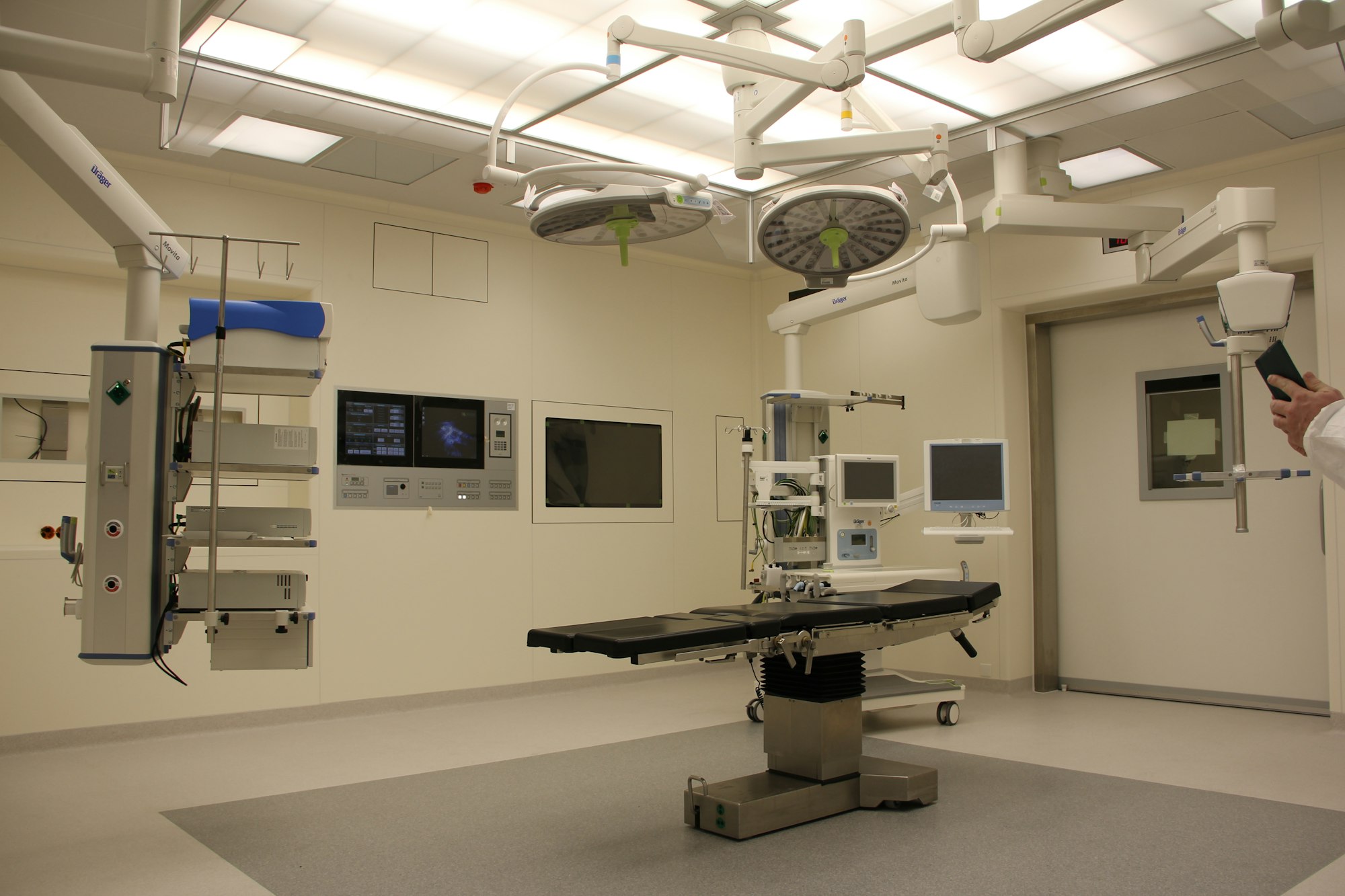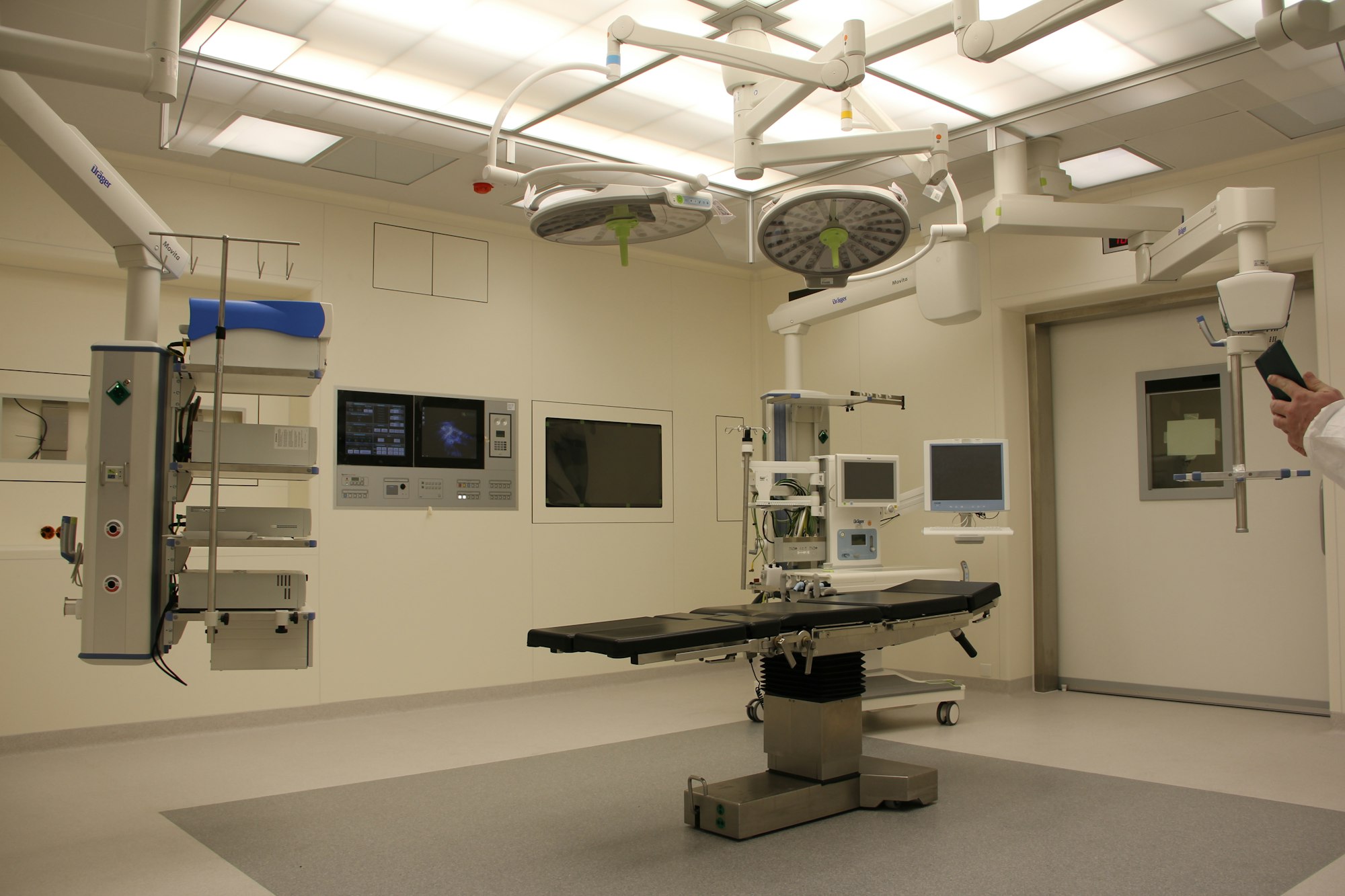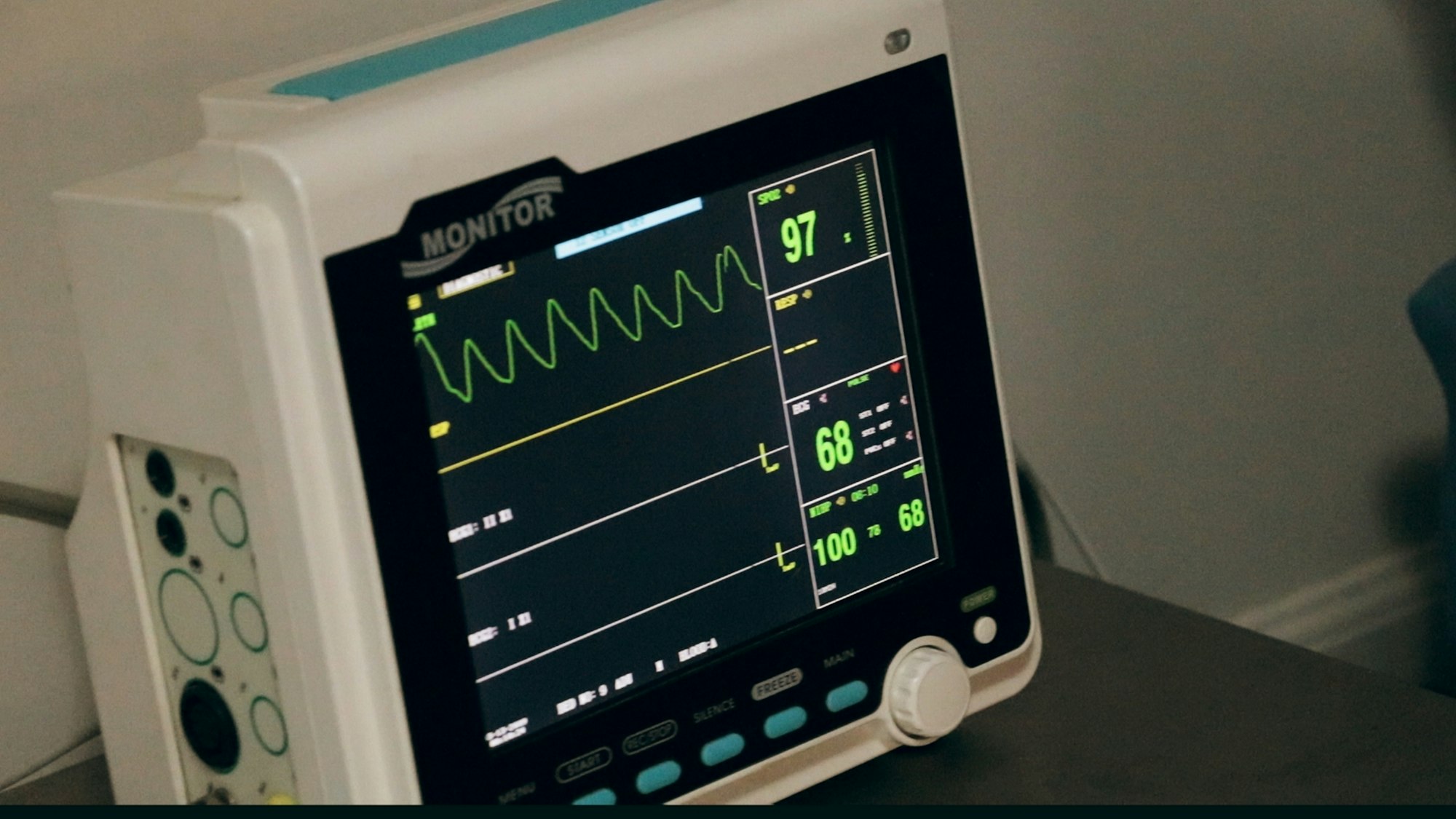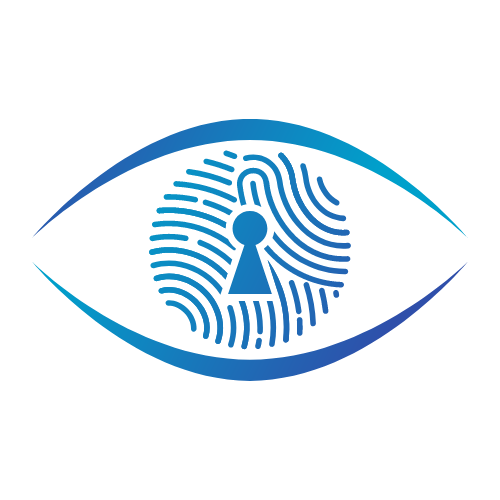AMEOS Hospital Network Cyberattack: Germany's Latest Healthcare Cybersecurity Crisis

TL;DR: Germany's AMEOS Hospital Network suffered a sophisticated cyberattack that compromised patient data and highlighted the growing threat to healthcare infrastructure across the country. This incident joins a troubling pattern of German hospital cyberattacks that have disrupted care and, in at least one case, contributed to a patient's death.

Executive Summary
Germany's AMEOS Hospital Network has confirmed a sophisticated cyberattack that compromised its IT infrastructure, leading to unauthorized access and potential exposure of sensitive patient data. Despite robust cybersecurity defenses including multi-factor authentication, intrusion detection systems, and regular vulnerability assessments, attackers successfully infiltrated the network in what appears to be a brief but impactful breach.
The incident represents the latest in a series of cyberattacks targeting German healthcare institutions, underscoring the critical vulnerabilities facing the country's medical infrastructure and the urgent need for enhanced cybersecurity measures.
The AMEOS Attack: What Happened
Initial Breach and Impact
The cyberattack on AMEOS involved unauthorized entities gaining access to core systems, potentially compromising:
- Personal health information (PHI) including patient medical histories and contact details
- Employee records containing sensitive personnel data
- Partner data and proprietary business information
Forensic analysis indicates the attack employed advanced persistent threat (APT) tactics, possibly involving zero-day exploits or supply chain vulnerabilities that allowed attackers to bypass perimeter security and achieve lateral movement within the network.

Attack Methodology
The breach demonstrates the sophistication of modern healthcare-targeted cyberattacks. Key characteristics include:
- Advanced evasion techniques that bypassed established security controls
- Lateral movement capabilities allowing spread across network segments
- Data exfiltration potential with risks of information appearing on dark web forums
- Targeted approach suggesting familiarity with healthcare infrastructure vulnerabilities
Swift Response and Containment
Immediate Actions
AMEOS responded rapidly to contain the breach:
- Network isolation: All internal and external network connections were severed
- Controlled system shutdown: Systems across the network were systematically shut down to prevent further data exfiltration
- Forensic investigation: External cybersecurity firms specializing in digital forensics and incident response (DFIR) were engaged
- Regulatory compliance: Prompt notification to Germany's Federal Office for Information Security (BSI) and adherence to GDPR breach reporting requirements
Enhanced Security Measures
Following the incident, AMEOS implemented additional security enhancements:
- Immediate patching of known exploits
- Deployment of endpoint detection and response (EDR) tools
- Reinforcement of zero-trust architecture
- Enhanced employee security awareness training
Germany's Broader Healthcare Cybersecurity Crisis
Historical Context: The Düsseldorf Tragedy
The AMEOS attack cannot be viewed in isolation. Germany has experienced several significant healthcare cyberattacks, most notably the 2020 Düsseldorf University Hospital incident that marked a tragic milestone in healthcare cybersecurity.
On September 10, 2020, Düsseldorf University Hospital fell victim to a ransomware attack that exploited a vulnerability in Citrix VPN software (CVE-2019-19781). The attack forced the hospital to deregister from emergency care services, leading to a critically ill patient being transferred to a hospital 30 kilometers away in Wuppertal. The hour-long delay in treatment contributed to the patient's death, marking what was initially considered the first cyber-related fatality in healthcare.
However, subsequent investigation revealed that while the cyberattack caused the delay, the patient's severe medical condition was ultimately the primary cause of death. Nevertheless, the incident highlighted the life-threatening potential of healthcare cyberattacks.

Other Notable German Hospital Incidents
Lukas Hospital Neuss (2016 and 2022)
- 2016: One of the first major German hospital ransomware attacks, contained through swift IT response
- 2022: Second attack that crippled operations and caused significant disruptions to patient care
Catholic Youth Welfare Association (KJF) Augsburg (2024)
- Attack occurred on April 17, 2024
- Compromised financial and patient data
- Demonstrated continued targeting of healthcare-adjacent organizations
Multiple 2016 Incidents
- Several German hospitals fell victim to ransomware in 2016
- Compromised patient data and severely disrupted operations
- Early warning signs of the escalating threat landscape
Current Threat Landscape
According to Germany's Federal Office for Information Security (BSI), while cyberattacks on large hospitals (those with over 30,000 inpatient cases annually) have actually declined since 2019, the threat remains significant:
- 2019: 61 reported incidents at critical healthcare facilities
- 2024: 3 incidents reported so far (as of mid-2024)
- Overall trend: Attacks increasingly sophisticated despite lower numbers
However, these statistics only capture hospitals meeting critical infrastructure thresholds. Smaller facilities face ongoing threats without mandatory federal reporting requirements.

Why Healthcare Attracts Cybercriminals
High-Value Data
Healthcare data represents a goldmine for cybercriminals due to:
- Comprehensive personal information: Medical histories, financial data, and Social Security numbers
- Long-term value: Healthcare data retains value longer than credit card information
- Dark web marketability: High demand for complete identity profiles
Operational Vulnerabilities
German hospitals face several systemic challenges:
- Legacy systems: Many facilities operate outdated software and hardware
- Compliance burden: Balancing security with GDPR and healthcare regulations
- Limited resources: Competing priorities for IT security investment
- Critical uptime requirements: Reluctance to patch systems that could disrupt patient care
Ransomware-as-a-Service (RaaS) Models
Modern cybercriminals increasingly use RaaS platforms that lower barriers to entry and enable more frequent, sophisticated attacks on healthcare targets.
Regulatory and Legal Framework
KRITIS Legislation
Germany's IT Security Act (IT-Sicherheitsgesetz) designates hospitals with over 30,000 annual inpatient cases as critical infrastructure, requiring:
- Sector-specific security standards
- Mandatory incident reporting to BSI
- Regular security assessments and updates
Patient Data Protection Act
Since 2022, all German hospitals must implement appropriate cybersecurity measures aligned with current technology standards, creating minimum security levels across the healthcare sector.

GDPR Enforcement in German Healthcare
Healthcare data breaches in Germany carry significant financial penalties under the General Data Protection Regulation (GDPR). A hospital in Rhineland-Palatinate was fined €105,000 in December 2019 for multiple GDPR breaches involving patient admittance errors that resulted in incorrect invoicing and exposed structural deficiencies in patient privacy management.
The fine, imposed by the State Commissioner for Data Protection and Freedom of Information (LfDI), highlighted the particular sensitivity of healthcare data and served as a warning that data protection authorities are "particularly vigilant in the field of data handling in healthcare."
Under GDPR, administrative fines in healthcare can reach €20 million or up to 4% of total worldwide annual turnover, whichever is higher. German data protection authorities have shown a pattern of targeting violations related to insufficient legal bases for data processing and deficiencies in information security.
Medical Device Regulation (MDR) Compliance
The EU Medical Device Regulation, which became fully applicable in May 2021, imposes strict requirements on healthcare technology and medical devices used in German hospitals. Non-compliance with MDR can result in lost market access, product recalls, and significant financial penalties, with one French company facing $85,000 USD in fines and criminal charges for employees after industrial-grade silicone was found in medical implants.
Germany's Medical Device Implementation Act (MPDG) supplements MDR requirements with national penalties that can include imprisonment of 1-10 years for serious violations, demonstrating the country's commitment to strict medical device safety standards.

Multi-Layered Compliance Requirements
German healthcare organizations must navigate complex overlapping regulations:
- GDPR and Federal Data Protection Act (BDSG) for patient data privacy
- Patient Data Protection Act (PDSG) for health-specific data handling
- Social Security Code regulations for statutory health insurance data
- Medical Device Regulation (MDR) for equipment and software
- Professional medical secrecy laws carrying potential criminal sanctions
EU Cybersecurity Initiatives
The European Union continues developing frameworks to strengthen healthcare cybersecurity, including updated incident reporting requirements and cross-border threat intelligence sharing.
Financial and Legal Consequences
The AMEOS cyberattack, like other healthcare data breaches in Germany, carries significant potential financial and legal consequences that extend far beyond immediate operational disruption.
GDPR Penalty Exposure
Under the General Data Protection Regulation, healthcare organizations face severe financial penalties for data breaches. A German hospital was fined €105,000 in 2019 for GDPR violations involving patient data mix-ups, demonstrating that data protection authorities are "particularly vigilant in the field of data handling in healthcare."
The potential penalties are substantial:
- Maximum fines: €20 million or 4% of total worldwide annual turnover, whichever is higher
- Scope: Covers all personal health information, employee records, and partner data
- Additional costs: Investigation expenses, legal fees, and remediation costs
Medical Device and EMR/EHR Compliance Risks
Healthcare cyberattacks in Germany often expose vulnerabilities in electronic medical records (EMR), electronic health records (EHR), and medical device systems, creating additional compliance risks:
Medical Device Regulation (MDR) Implications:
- Non-compliance can result in lost market access, product recalls, and lawsuits
- A French company faced $85,000 USD in fines and criminal charges after industrial-grade silicone was found in medical implants
- German penalties under the Medical Device Implementation Act (MPDG) can include imprisonment of 1-10 years for serious violations
EMR/EHR System Vulnerabilities:
- Compromised patient records can trigger cascading compliance failures
- Integration with medical devices creates additional regulatory exposure
- Data integrity requirements under both GDPR and medical device regulations

Criminal Law Exposure
Healthcare data breaches in Germany can trigger criminal investigations beyond administrative fines:
- Medical professional secrecy violations carry potential criminal sanctions
- Negligent data handling may result in professional sanctions for medical staff
- Systemic failures can lead to investigations of hospital IT departments and management
Civil Liability and Compensation
Beyond regulatory penalties, healthcare organizations face:
- Patient compensation claims for data misuse and identity theft
- Business partner liability for compromised third-party data
- Operational losses from service disruption and reputation damage
- Insurance implications and potential coverage gaps
Sector-Specific Financial Impact
The healthcare sector faces unique financial pressures from cyberattacks:
- Immediate operational costs: Manual processes, staff overtime, external forensic services
- Long-term reputation damage: Patient trust erosion and competitive disadvantage
- Regulatory scrutiny: Increased oversight and mandatory security investments
- Insurance premium increases: Higher cybersecurity insurance costs post-incident
The AMEOS incident reflects a worldwide crisis in healthcare cybersecurity. Key global statistics highlight the scope of the problem:
- 2023 US data: Over 1,500 ransomware incidents affecting healthcare, resulting in $1.1 billion in ransom payments
- Change Healthcare attack: February 2024 attack affected 100 million Americans and cost $130 million in response efforts
- Ascension Health: May 2024 ransomware attack disrupted 120 hospitals and caused $900 million in lost revenue

Lessons Learned and Recommendations
For Healthcare Organizations
- Implement zero-trust architecture with network segmentation
- Maintain current patch management procedures
- Conduct regular penetration testing and vulnerability assessments
- Develop comprehensive incident response plans including manual backup procedures
- Invest in employee security awareness training focusing on phishing recognition
For Policy Makers
- Strengthen critical infrastructure protections beyond current thresholds
- Enhance threat intelligence sharing between healthcare organizations
- Provide financial support for cybersecurity infrastructure upgrades
- Develop sector-specific security guidelines tailored to healthcare operations
For Patients and Partners
- Monitor personal information for signs of misuse
- Be vigilant against social engineering attacks using compromised data
- Report suspicious communications to relevant authorities
- Stay informed about security incidents affecting healthcare providers
The Path Forward
The AMEOS cyberattack serves as another wake-up call for Germany's healthcare sector. While the country has made progress in cybersecurity regulation and incident response, the evolving threat landscape demands continuous adaptation and investment.
Healthcare organizations must balance the imperative to maintain patient care operations with the critical need for robust cybersecurity. This balance requires not just technical solutions, but also cultural changes that prioritize security awareness and preparedness at all organizational levels.
As cyber threats continue to evolve, the healthcare sector's resilience will depend on collaborative efforts between healthcare providers, technology vendors, government agencies, and international partners. Only through comprehensive, coordinated action can the industry hope to stay ahead of increasingly sophisticated adversaries who view healthcare infrastructure as an attractive target.

The stakes could not be higher: in healthcare cybersecurity, lives literally hang in the balance.
This article is based on public reports and official statements. Healthcare organizations affected by cyberattacks should consult with cybersecurity professionals and legal counsel for specific guidance on incident response and regulatory compliance.












